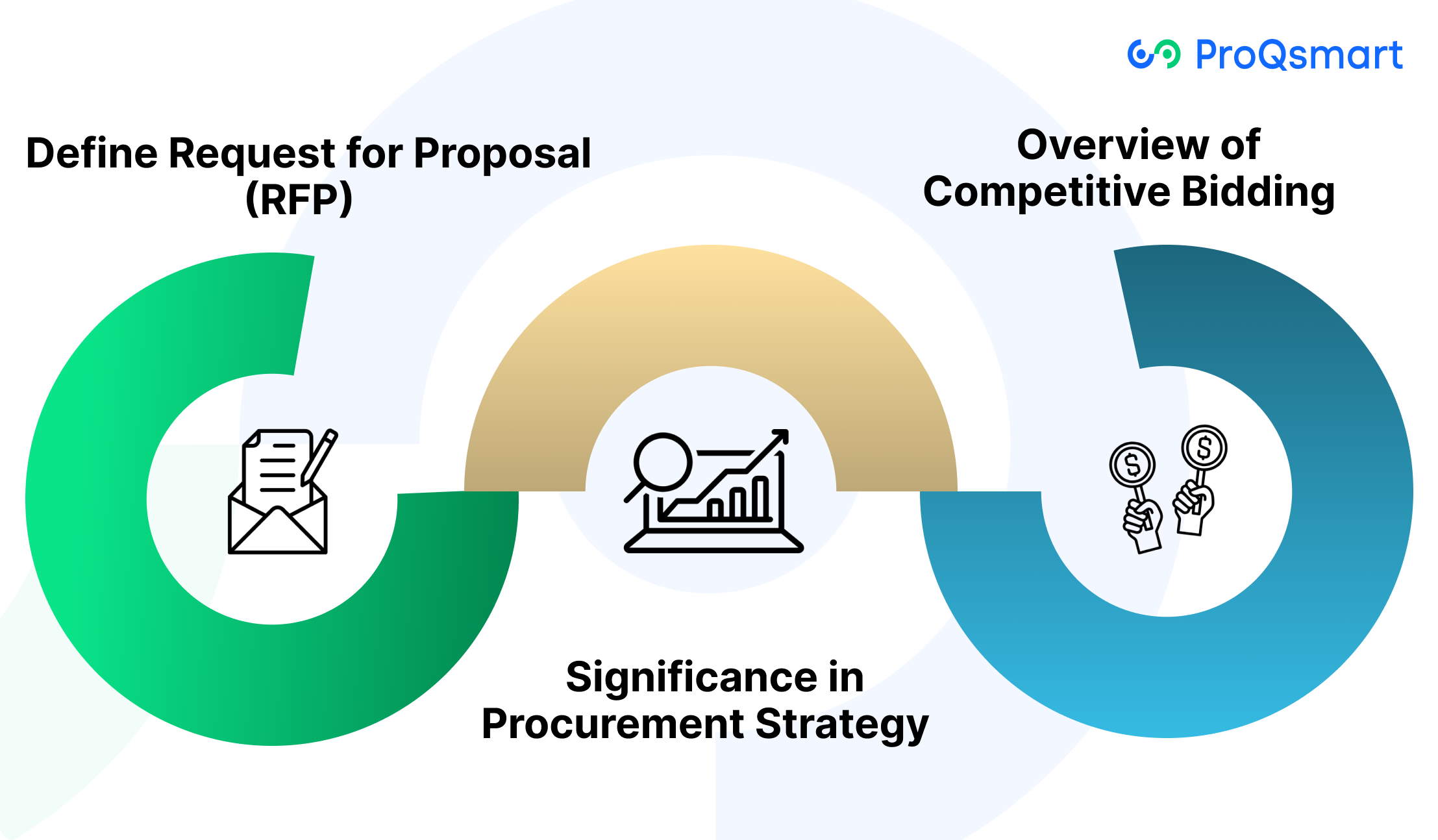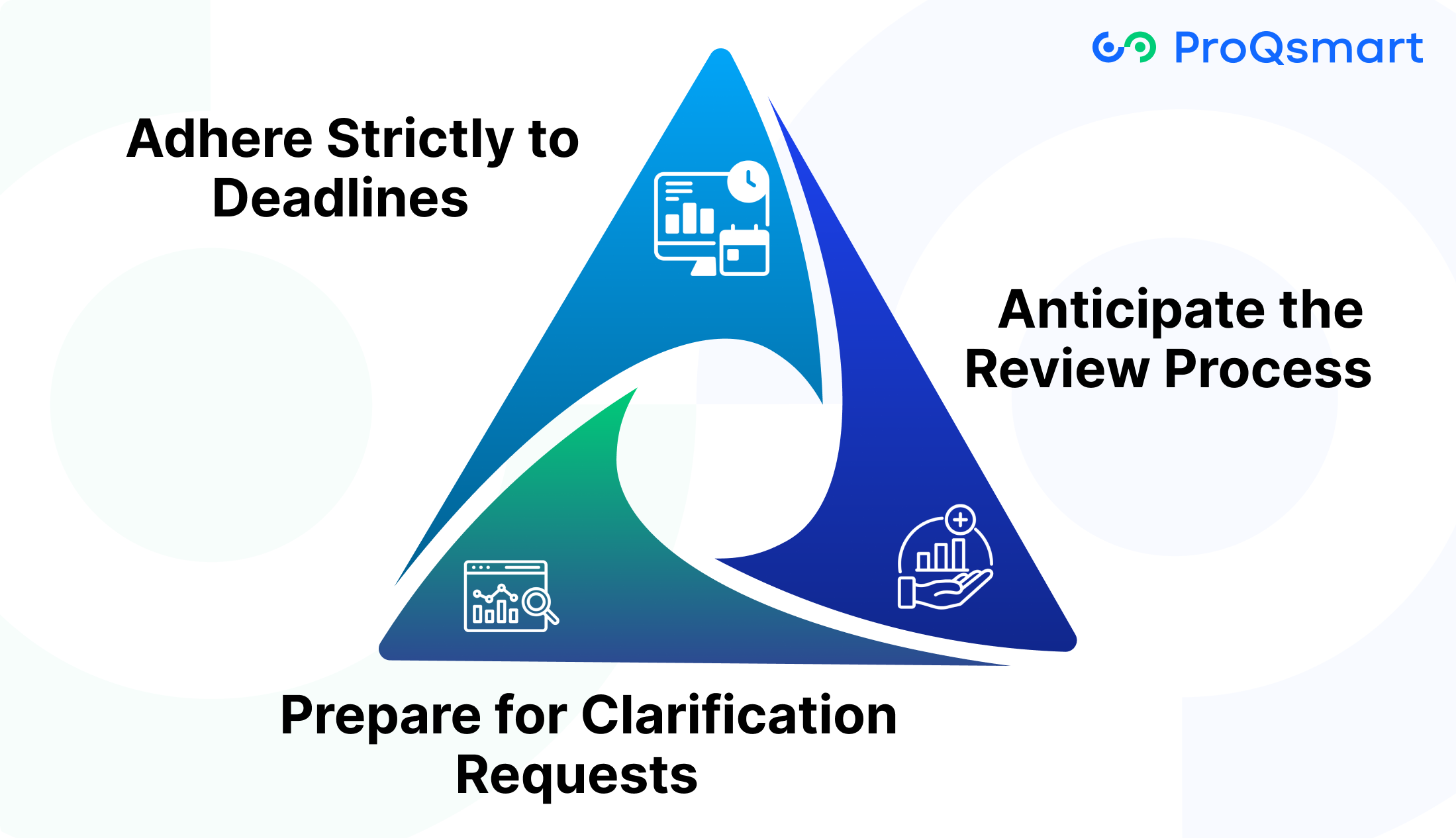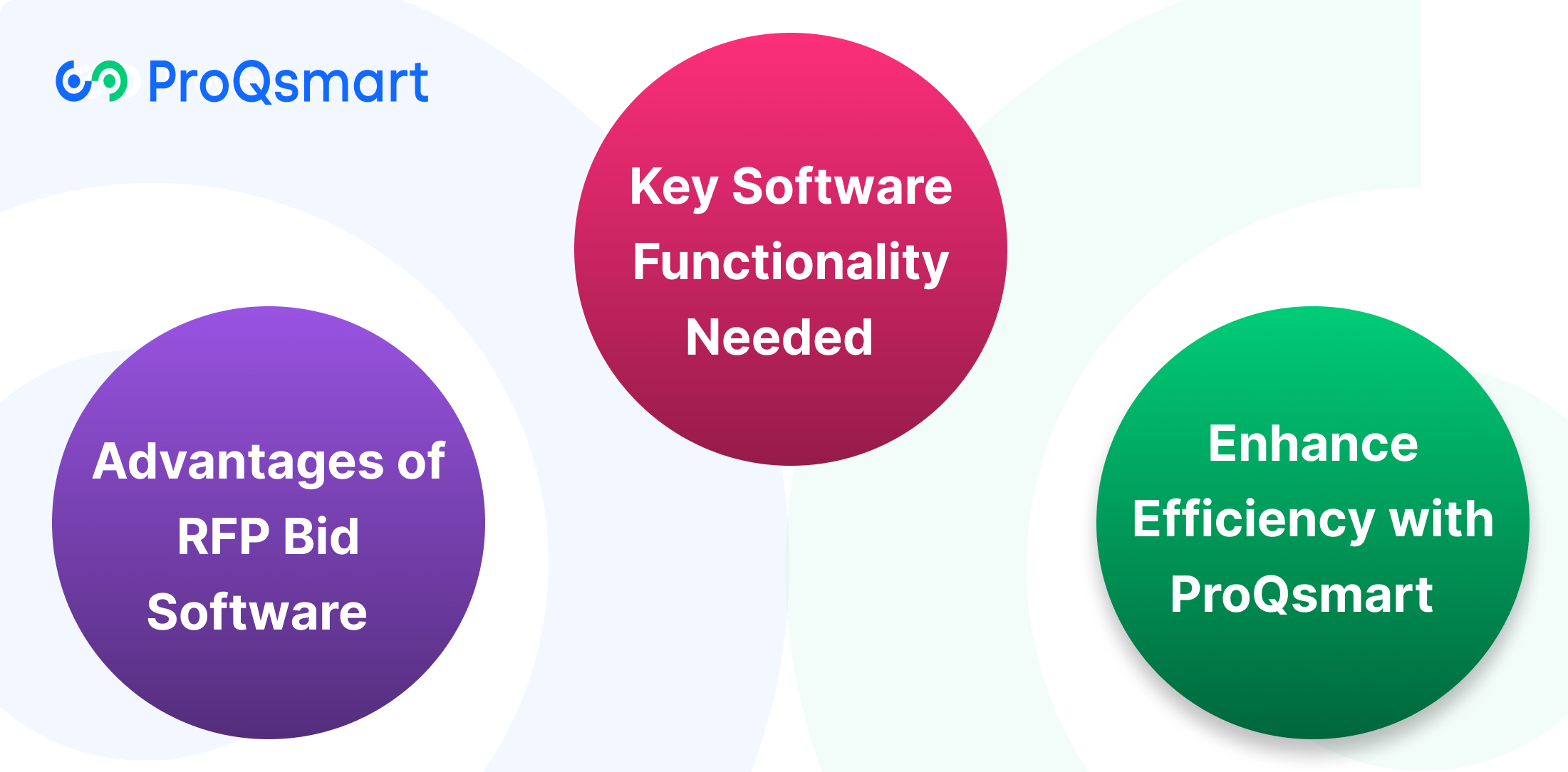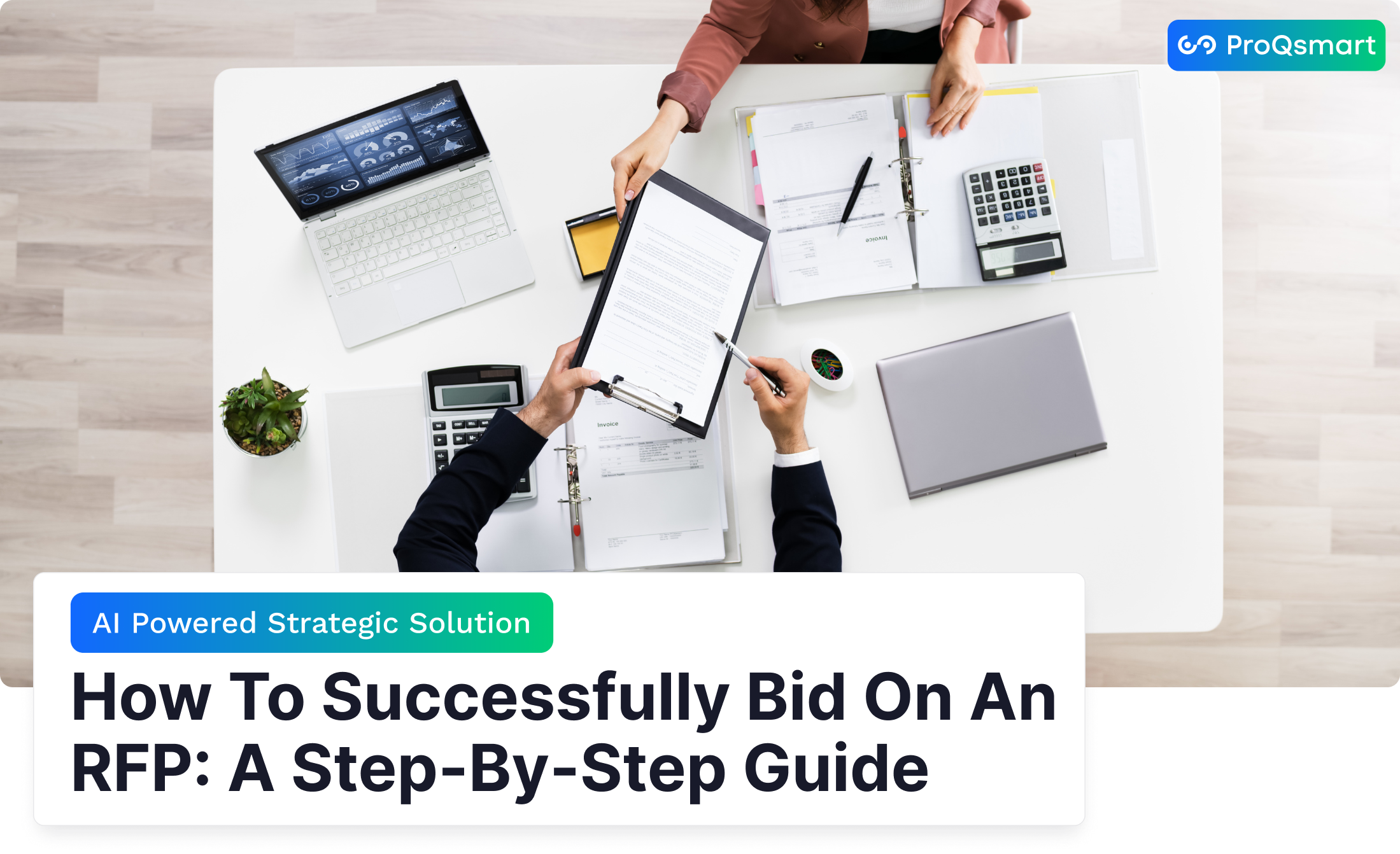To respond to an opportunity outlined in an RFP, firms submit a detailed proposal and fee schedule tailored to the prospective client’s needs. They win by using primary data, highlight previous wins to differentiate themselves, and often much more.
Teams identify the most critical needs, determine what needs to be done in manageable phases, and establish reasonable costs that align with the work. Providing specifics such as lead times, material selections and O&M support plans go a long way in establishing trust.
In custom manufacturing, revealing their secret sauce to solving tough build or timing challenges makes for a distinct competitive advantage. Firms are driven to describe their innovative uses of smart tools or green measures to exceed challenging, tough, hard, really awful specs.
To cut through and stay at the top of the pile, they make the bid informative but to the point, concise, easy to digest. The following sections outline how to prepare and submit a winning proposal.
Understanding the RFP Bidding Process in Procurement

The RFP bidding process offers a structured, definitive method for sourcing. Companies employ this practice to discover, evaluate, and procure the ideal suppliers that meet their requirements. While many teams are still stuck using manual emails and Excel files, the technology has drastically evolved, providing teams with greater speed and control.
Normally, it’s about a four week process for almost all projects. In this period, we aim to spend our time on proper setup, issuing the RFP, response review, response evaluation, and offer negotiation. Of course, larger or more complicated projects will take longer—particularly if multiple rounds of review and/or negotiation are required.
Define Request for Proposal (RFP)
An RFP, or request for proposal, is a formal document used to solicit suppliers to bid on providing specified goods or services. The key elements of an RFP are the project objectives, specific needs, timelines, and evaluation criteria. This information enables suppliers to understand what the buyer is looking for and determine whether they are able to provide that solution.
Be confident that you will get the most well-suited bidders with an RFP that has clear, concise terms and communication. They establish accountability and help to limit surprises down the road.
Significance in Procurement Strategy
RFPs provide teams with a strategic lens for vendor selection. They assist procurement professionals in orienting their suppliers towards quality outcomes and financial savings simultaneously. Know that RFPs lay the groundwork for effective long-term collaboration and positive vendor rapport.
Corporations can get more for less if they follow a defined process. This method protects them from having to take on the dangers of hasty or handshake arrangements. Innovative tools such as ProQsmart are making these efforts easier by saving time on automation and budget tracking, making supplier reviews fast, easy, and credible.
Overview of Competitive Bidding
RFPs can be an opportunity for bidding to bring out the best in our vendors. Each vendor submits its best product and price, and procurers get to evaluate service and quality across vendors on a level playing field. Using transparent and pre-established rules ensures that the process is fair.
Sometimes teams request a best and final offer before making the final decision. Fortunately, digital tools have levelled the playing field to allow for streamlined bid management, file/CADD checking, deadlines, compliance, and everything in between.
Deconstruct the RFP Document
An RFP document determines the entire arc of a project from start to finish. It’s the starting point that establishes the level of creativity, quality, and expectations. RFPs often detail the project’s needs, goals, and objectives and how potential vendors will be evaluated.
The typical team puts their draft together in a week or two at most. They then go on to draft those drafts again and again to hone their craft. A comprehensive RFP with detailed scope, specifications, and timelines sets the tone for bidders and allows companies to select the most suitable bid partner.
When teams share the RFP, they post it publicly or send it to a bidder list, usually within a week. This deliberate preparation makes a big difference. Well thought-out RFPs lead to stronger proposals, ultimately fostering more successful projects.
Identify Critical Client Needs
Identifying critical client needs is essential for project success. Key elements include the scope of work and deliverables, project timelines and milestones, budget limits and payment terms, required experience or certifications, and quality standards and compliance needs.
Teams seek input from every angle—engineering, finance, and operations—to develop a comprehensive view. When project goals and community needs are clearly articulated, vendors can provide more focused proposals and lessen the frustration and disillusionment.
Providing a clear end delivery date or certifications needed allows for vendors to develop an appropriate plan. This designer-driven, collaborative approach saves time and leads to better outcomes for everyone involved.
Analyze Evaluation Metrics Deeply
Key metrics to judge the responses should include price, technical fit, past work, and the bidder’s ability to meet deadlines. Teams combine quantifiable metrics, such as cost and delivery time, with interpersonal qualities, such as communication approach.
Transparent, clearly defined scoring fosters trust and allows the vendor community to understand what is being prioritized most. ProQsmart’s AI tools help teams identify specific metrics they want to achieve. They can score these metrics in real time, making sure scoring is equitable and transparent.
Understand Submission Rules Precisely
Rule guidelines govern submission deadlines, required forms, and proof of insurance or other licenses. Providing clear, sequential steps prevents the pitfalls of last-minute errors, one of the most common being missing a date or required document.
Best of all, teams put rules out in public and cover every requirement on a checklist before submitting proposals.
Seek Clarification Effectively
Bidders submit questions only through specified channels and receive responses promptly, usually via email or online portal. They redirect discussions to maintain momentum and keep the process moving as efficiently as possible.
Craft a Winning Bid Proposal
A compelling winning bid proposal speaks directly to client needs and reflects a thorough understanding of the intent of the RFP. Those teams that truly desire to win go far beyond the prepared responses. They design each section to conform to what the client requests, maximizing the impact of every word.
This method personalizes your approach and fosters trust and it’s a surefire way to differentiate from piles of cookie-cutter bids.
1. Move Beyond Standard Responses
It’s easy to overlook specifics when your team members are copying and pasting outdated language. Every answer needs to address the project’s real requirements. If the RFP identifies specific supply chain deficiencies, then offer a detailed solution which closes those deficiencies the best.
Second, make sure your approach speeds up the procurement cycle by at least 30%. Filling in proposal examples with real-world case data not only demonstrates special skills but allows buyers to visualize true value.
2. Tailor Solutions to Stated Objectives
Customization is key in the rfp procurement process. Use these steps.
-
Pinpoint client goals in the RFP.
-
Map each solution to these goals.
-
Use simple charts or bullet lists to show alignment.
-
Connect compliance checklists to hit all the marks.
3. Embed Unique, Value-Driven Insights
Prove your profound understanding of the industry with evidence. Show how increased transparency or cost efficiency benefits the client.
For example, reference when you used ProQsmart to monitor supplier performance and avoid 15% in cost overruns.
4. Blend Storytelling with Data
Pair narratives with compelling data. Tell how an efficient, straightforward process supported by actual data made all the difference for one previous client.
5. Present Authentic Case Studies
Showcase authentic successes. Share anecdotes in which your proposed solution would have met the context of the RFP. This helps establish your credibility.
6. Highlight Proactive Risk Mitigation
Talk about risks upfront in the rfp bidding process. To prevent these risks, map out specific steps such as back-up suppliers or compliance checklists that protect the project.
7. Ensure Proposal Readability, Professionalism
Avoid jargon and complex terms along maintaining the professionalism of the format. Don’t include complicated acronyms or technical language that may alienate evaluators.
8. Integrate Cross-Functional Team Expertise
Leverage knowledge from engineering, procurement, and legal to enhance the rfp bidding process through collaboration.
9. Use Analytics for Personalization
Take advantage of technology, such as ProQsmart, during the rfp bidding process. Leverage the power of analytics to tailor each bid, ensuring it meets the true service needs of the government.
Essential RFP Bid Proposal Components
Each RFP bid proposal needs strong organizational flow and complete information. That’s how it grabs their attention and gets noticed in a pile of 50 to 200 RFP questions. A good proposal covers the main points: purpose, project overview, scope of work, timeline, budget, evaluation criteria, and more.
Each piece communicates clearly to the client how the team will specifically address their needs and how the work will be completed.
Compelling Executive Summary First
A concise yet thorough executive summary provides a snapshot of the entire proposal. This portion should define the project’s mission, the primary objectives, and the unique value the team provides.
This allows evaluators to more easily identify key information and demonstrates alignment to the RFP’s vision and overall goals. Linking the summary to a firm’s five-year expansion strategy shows long-term vision.
It demonstrates that the team is prepared to confront the challenges ahead.
Detailed Technical Approach Section
The technical section should describe the “how” in detail, step-by-step. This section outlines the approaches, platforms, tools and any unique technology that will be used.
A detailed description should refer to the RFP’s scope of work, addressing how each specific task contributes to accomplishing the project’s goals. If a project involves automated workflows, teams can use platforms like ProQsmart to handle e-tenders, manage documents, and keep everything tracked in real-time.
Clear Pricing and Terms
Pricing needs to be clear and align with the value you provide in the context of the rfp bidding process. Cost Teams offer detailed breakdowns that demonstrate how the budget corresponds to the intended scope of work, which is essential for potential bidders to understand the contract terms and payment structure.
Including budget-driven tools, like has been accomplished with ProQsmart, lends innovative trust and allows clients to visualize how their dollars are spent, enhancing the overall procurement process.
Relevant Company Background Proof
Providing some background information helps to re-establish that trust. This section should address the firm’s background, previous successes, and client testimonials.
Providing information on completed analogous work or testimonials from previous large clients provides evidence that the firm’s team is capable of achieving the project’s objectives.
Complete Required Forms Accurately
Every element, from the required pages to all of the forms, has to be completed correctly and ensure compliance. Small mistakes can derail the process and slow projects down significantly.
Automated compliance tracking and submission tools, such as ProQsmart, ensure the process stays seamless and submission information 100% accurate.
Navigate Submission and Evaluation Stages

Avoiding the pitfalls of the RFP submission and evaluation stages requires a calm, step-by-step mindset. Teams still try to manage it all in dozens of emails back and forth, passing around Excel, Word, and PDF files. It can make everything take longer and cause a loss of information.
The second step in the RFP process means picking vendors, sending out the RFP, answering questions, waiting for proposals, and following up as deadlines draw near. Most teams have turned to RFP management softwareto maximize the time they do have, though the saved time is difficult to quantify.
Adhere Strictly to Deadlines
Meeting each submission and evaluation deadline is of utmost importance. Most boats go to a calendar for every stage, listing tasks day by day. Like many other submission and evaluation processes, missing even one date can result in disqualification, regardless of an exceptionally strong proposal.
For instance, proposals that are late automatically go to the bottom of the stack or are discarded altogether. Turning that timeline into a checklist and marking each item as done helps keep all the moving pieces organized.
Anticipate the Review Process
Understanding how proposals will be evaluated allows teams to provide clearer, stronger plans. Evaluators are tied to the criteria outlined in the NOFO, so teams should closely read these bullet points and prepare application materials accordingly.
Even “full service” reviews typically call for supporting documentation and might request additional information. Teams that have their data, visualizations, and technical specs prepared will be able to respond to requests quickly and remain competitive.
Prepare for Clarification Requests
Many times during the review, teams will receive clarifying questions or requests for correction. Timely, concise responses help prevent communication breakdowns and ensure a seamless review process.
Teams that can respond quickly when things go wrong prove themselves to be trustworthy partners. Vendors may have an opportunity to address minor mistakes before being removed altogether.
Being prepared to respond to the requests and having your records maintained goes a long way.
Streamline Bidding with Technology

RFP bidding pieces work more effectively with the right tech stack. Many custom manufacturers now use digital platforms to cut down on paperwork, speed up steps, and keep teams on the same page.
For instance, tools such as ProQsmart allow teams to manage competitive bids from a single dashboard. They assist us in reducing the typical 10 to 16 week bid cycle. Also take care of document creation, approval process, and electronic signatures, meaning teams don’t have to sift through stacks of hand-edited documents.
Advantages of RFP Bid Software
RFP bid management software lets your team store all documentation, assignments, and progress tracking in one centralized hub. It keeps work moving, reduces duplicated effort, and allows teams to collaborate remotely.
Interactive features such as proposal tracking, reminders, and live document updates ensure that your entire team is always on the same page. These tools go a step farther too, allowing teams to search for previous bids, audit changes made and maintain visibility for managers.
Key Software Functionality Needed
-
Secure document storage and sharing
-
Real-time team chat and update feeds
-
AI-powered market and competitor analysis
-
Simple, clear dashboards and user navigation
Enhance Efficiency with ProQsmart
ProQsmart makes the process even smarter by connecting these AI-powered decision-making tools with e-tendering, cost tracking, and supplier management. It automates everything from importing bills of quantities to automatically checking subcontractors.
With ProQsmart’s real-time collaboration tools and budget tracking, you can complete your bid faster and ensure the right projects stay on track.
Post-Submission Actions and Improvement
One of the biggest wins teams experience after submitting an RFP bid is implementing active post-submission actions. These actions influence not only the next proposal but the future strategy for each and every opportunity. Maintaining regular contact with decision-makers, even months or years after the first RFP, often leads to deeper trust and new projects down the line.
Teams that track their process closely, document workflows in tools like ProQsmart, and budget extra time for every step set themselves up for smoother, more predictable results. When a BAFO (Best and Final Offer) negotiation occurs, having cost information up front speeds negotiations. This helps to make sure that the negotiations continue to progress quickly towards a final agreement.
Actively Solicit Proposal Feedback
Teams get a true competitive advantage when they actively ask for unvarnished advice from adjudicators. Constructive criticism identifies what was done right and what went wrong so that the next round of proposals can do better. A reliable feedback loop through forms, phone calls, or software allows for the identification of reoccurring issues and directs program teams to adjust their strategy.
ProQsmart, for instance, makes it easy to organize feedback, track changes, and keep everyone in sync, even across large teams. Leveraging AI technologies such as Requirements Analysis to create executive summaries of documents can save countless hours and allow teams to spend time on what truly counts.
Conduct Win/Loss Analysis
Looking back to see why a proposal was successful or unsuccessful provides an extremely detailed road map for teams about what actually leads to success. Reviewing multiple bids reveals trends, such as pricing discrepancies or insufficient technical details. This continuous retrospective enables teams to operate more effectively and not repeat history’s mistakes.
Continuously Refine Bidding Strategy
Organizations that ensure their tactics are current, especially in the government rfp bidding process, are those leading the industry. They differentiate themselves by providing hard evidence to support every claim. By collaborating closely with SMEs and internal partners, they navigate the procurement process effectively.
Conclusion
Teams that understand the RFP process move quickly and decisively through every stage. They understand what makes or breaks each line, and they craft bids that don’t just fade into the crowd. When you use technology strategically, you minimize errors. This allows you time to really dive into the nitty gritty of each project. Engineers localize manufacturers, buyers control spending, and project managers monitor submittals. Here’s how each role contributes its unique piece to the process, like a set of gears in a well-oiled shop. The right habits enable teams to iterate, learn from each draft class, and attract the blue-chip wins. Access to practical expertise and powerful technology with the right expertise and technology, the work gets easier and better, enabling you to stay ahead of the pack. Interested in learning more about these opportunities? Find out more about ProQsmart and schedule a demo today!




